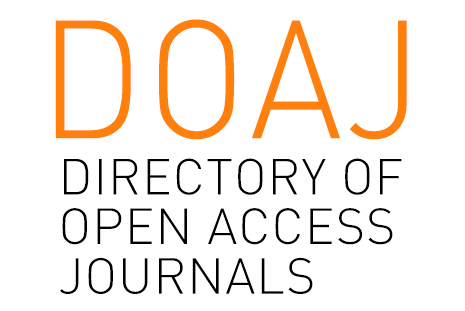Comparison of the epidemiological profile of individuals with hearing loss who use or do not use brazilian sign language
Comparação do perfil epidemiológico de pessoas com perda auditiva usuárias ou não de libras
DOI:
https://doi.org/10.17765/2176-9206.2025v18e12911Keywords:
Epidemiological Profile, Hearing Loss, Sign Language, Access to Health ServicesAbstract
Objective: To analyze the sociodemographic and health characteristics of deaf Brazilian Sign Language (LIBRAS) users compared with non-users. Methodology: A cross-sectional descriptive epidemiological study was conducted with a non-probabilistic intentional sample. Data were collected by a self-reported and online questionnaire and underwent stratified analyses by subgroups of interest using Fisher’s exact test and Odds Ratios. Results: Most study participants communicated using LIBRAS. Deaf non-sign language users had a higher schooling level compared with sign language users. We observed a higher proportion of employed men and unemployed women. Results highlight the linguistic barriers experienced by deaf sign language users regarding limitations in accessing health information about self-care and treatment. Conclusion: We found no statistically significant differences when comparing the sociodemographic and health characteristics between the groups of deaf LIBRAS users and non-users, except with regard to education and employment. Although not being a population-based study, these findings provide input for developing public policies aimed at deaf people in the region studied.Downloads
References
Brasil. Lei nº 10.436, de 24 de abril de 2002. Dispõe sobre a Língua Brasileira de Sinais - Libras e dá outras providências. Diário Oficial da União [internet], Brasília, 2002 [cited in 2024 jun. 14]. Available from: https://www.planalto.gov.br/ccivil_03/leis/2002/l10436.htm.
Brasil. Decreto nº 5.626 de 22 de dezembro de 2005. Regulamenta a Lei nº 10.436, de 24 de abril de 2002, que dispõe sobre a Língua Brasileira de Sinais a LIBRAS, e o art. 18 da Lei 10.098 de 19 de dezembro de 2002. Diário Oficial da União [internet], Brasília, 23 dec. 2005 [cited in 2024 jun 14]. Available from: https://www.planalto.gov.br/ccivil_03/_ato2004-2006/2005/decreto/d5626.htm.
Barbosa HJC, Aguiar RA, Bernardes HMC, Azevedo Junior RR, Braga DB, Szpilman ARM. Perfil clínico epidemiológico de pacientes com perda auditiva. J Health Biol Sci. [Internet]. 2018;6(4):424-30. https://doi.org/10.12662/2317-3076jhbs.v6i4.1783.p424-430.2018.
Oliveira LMB, Secretaria Nacional de Promoção dos Direitos da Pessoa com Deficiência (SNPD), Coordenação-Geral do Sistema de Informação sobre a Pessoa com Deficiência. Cartilha do Censo 2010: pessoas com deficiência. Brasília: SDH-PR/SNPD; 2012 [cited in 2024 jun. 14]. Available from: https://inclusao.enap.gov.br/wp-content/uploads/2018/05/cartilha-censo-2010-pessoas-com-deficienciareduzido-original-eleitoral.pdf.
Instituto Brasileiro de Geografia e Estatística. Pesquisa Nacional de Saúde 2013: ciclos de vida [Internet]. Rio de Janeiro: IBGE; 2015 [cited in 2024 jun. 14]. Available from: https://www.pns.icict.fiocruz.br/wp-content/uploads/2021/02/liv94522.pdf.
Instituto Brasileiro de Geografia e Estatística. Pesquisa Nacional de Saúde 2019: ciclos de vida [Internet]. Rio de Janeiro: IBGE; 2021 [cited in 2024 jun. 14]. Available from: https://www.pns.icict.fiocruz.br/wp-content/uploads/2021/12/liv101846.pdf.
Instituto Brasileiro de Geografia e Estatística. Pesquisa Nacional de Saúde 2019: percepção do estado de saúde, estilos de vida, doenças crônicas e saúde bucal [Internet]. Rio de Janeiro: IBGE; 2021 [cited in 2024 jun. 14]. Available from: https://www.pns.icict.fiocruz.br/wp-content/uploads/2021/02/liv101764.pdf.
Graue Hernandéz EO, Gómez-Dantés H, Romero-Martínez M, Bravo G, Arrieta-Camacho J, Jiménez-Corona A. Self-reported hearing loss and visual impairment in adults from Central Mexico. Salud Publica Mex [Internet]. 2019 ;61(5):629-636. https://doi.org/10.21149/10086.
Nunes ADS, Lima Silva CR, Balen AS, Souza DLB, Barbosa IR. Prevalence of hearing impairment and associated factors in school-aged children and adolescents: a systematic review. Braz J otorhinolaryngol. (Online). 2019;85(2):244–53. https://doi.org/10.1016/j.bjorl.2018.10.009.
Sheffield AM, Smith RJH. The Epidemiology of Deafness. Cold Spring Harb Perspect Med. 2019 ;9(9):a033258. https://doi.org/10.1101/cshperspect.a033258.
Li CM, Zhao G, Hoffman HJ, Town M, Themann CL. Hearing Disability Prevalence and Risk Factors in Two Recent National Surveys. Am J Prev Med. [Internet]. 2018;55(3):326–35. https://doi.org/10.1016/j.amepre.2018.03.022.
Silva DS da, Quadros RM de. Línguas de sinais de comunidades isoladas encontradas no Brasil. Braz. J. Develop. [Internet]. 2019;5(10):22111-27. https://doi.org/10.34117/bjdv5n10-342.
Galvão MVA. Avaliação da qualidade de vida do estudante surdo do Centro de Capacitação dos profissionais da educação e atendimento às pessoas com surdez (CAS) de Goiânia [dissertação]. Goiânia: Universidade Federal de Goiás; 2017. Available from: https://repositorio.bc.ufg.br/tede/items/ff6c731c-813c-4086-a9e6-d3a67f73e3da.
Committee on Accessible and Affordable Hearing Health Care for Adults, Board on Health Sciences Policy, Health and Medicine Division, National Academies of Sciences, Engineering, and Medicine, Blazer DG, Domnitz S, Liverman CT (ed.). Hearing Health Care for Adults: Priorities for Improving Access and Affordability. Washington (DC): National Academies Press (US); 2016. https://doi.org/10.17226/23446.
Tsimpida D, Kaitelidou D, Galanis P. Determinants of health- related quality of life (HRQoL) among deaf and hard of hearing adults in Greece: a cross-sectional study. Arch Public Health. 2018;76:55. https://doi.org/10.1186/s13690-018-0304-2.
Fuentes-López E, Fuente A. Access to healthcare for deaf people: a model from a middle-income country in Latin America. Rev de Saúde Pública. 2020 ;54:13. https://doi.org/10.11606/s1518-8787.2020054001864.
Chrestani MAD, Santos IS, Matijasevich AM. Hipertensão arterial sistêmica auto-referida: validação diagnóstica em estudo de base populacional. Cad Saúde Pública. 2009;25(11):2395–2406. https://doi.org/10.1590/S0102-311X2009001100010.
Murakami K, Kuriyama S, Hashimoto H. Economic, cognitive, and social paths of education to health-related behaviors: evidence from a population-based study in Japan. Environ Health Prev Med. 2023;28:9. https://doi.org/10.1265/ehpm.22-00178.
Jardim DS, Maciel FJ, Lemos SMA. Epidemiological profile of a hearing-impaired population. Rev CEFAC. 2016 [cited 2024 Jun. 15];18(3):746–757. https://doi.org/10.1590/1982-021620161833115.
Instituto Brasileiro de Geografia e Estatística. Downloads - Estatísticas. 2022 [cited in 2024 jun. 14]. Available from: https://ftp.ibge.gov.br/PNS/2019/.
Silva VS da, Bordas MAG. Surdez, educação e trabalho. Rev Educ Espec. [Internet]. 2020;33:1-16. https://doi.org/10.5902/1984686X35960.
Rita TO, Batista da Silva DO. Os desafios enfrentados pelos surdos, membros da Associação de Surdos de Tubarão, no processo de inserção e exercício da função laboral. Repositório Universitário da Ânima; 2019. Available from: https://repositorio.animaeducacao.com.br/items/9354bb54-9fc7-4388-89ef-643f655ff6fa.
World Health Organization. Ottawa charter for health promotion. Geneve: WHO;1986 [cited in 2024 jul. 30]. Available from: https://iris.who.int/bitstream/handle/10665/349652/WHO-EURO-1986-4044-43803-61677-eng.pdf?sequence=1&isAllowed=y.
Jacob SA, Palanisamy UD, Napier J, Verstegen D, Dhanoa A, Chong EY. Health Care Needs of Deaf Signers: The Case for Culturally Competent Health Care Providers. Acad Med 2022 ;97(3):335-340. https://doi.org/10.1097/ACM.0000000000004181.
Rodríguez-Martín D, Rodríguez-García C, Falcó-Pegueroles A. Ethnographic analysis of communication and the deaf community's rights in the clinical context. Contemp Nurse. 2018;54(2):126-138. https://doi.org/10.1080/10376178.2018.1441731.
Campos V, Cartes-Velásquez R, Luengo L. Chilean Health Professionals’ Attitudes Towards Deafness: A Cross-Sectional Study. Pesqui Bras Odontopediatria Clín Integr. 2020 ;20:e0020. https://doi.org/10.1590/pboci.2020.087.
Marquete VF, Marcon SS, França ISX, Teston EF, Oliveira MLF, Costa MAR et al. Prevalência de doenças crônicas não transmissíveis e fatores associados em pessoas surdas. Rev Bras Enferm. 2022;75(Suppl 2): e20210205. https://doi.org/10.1590/0034-7167-2021-0205pt.
Neves RG, Tomasi E, Duro SMS, Saes-Silva E, Saes MO. Complications due to diabetes mellitus in Brazil: 2019 nationwide study. Ciênc saúde coletiva. 2023;28(11): 3183–3190. https://doi.org/10.1590/1413-812320232811.11882022.
Ministério da Saúde. Relatório aponta que número de adultos com hipertensão aumentou 3,7% em 15 anos no Brasil. 2022 [cited in 2024 jun. 14]. Available from: https://www.gov.br/saude/pt-br/assuntos/noticias/2022/maio/relatorio-aponta-que-numero-de-adultos-com-hipertensao-aumentou-3-7-em-15-anos-no-brasil.
Nascimento TS, Amaral TLM, Amaral, C de A, Vasconcellos, MTL de, Monteiro GTR. Prevalência de diabetes mellitus e fatores associados em adultos: inquérito de base populacional. Rev Saúde e Pesquisa 2023;16(2): e-11514. https://doi.org/10.17765/2176-9206.2023v16n2.e11514.
Rezende RF, Guerra LB, Carvalho SAS. A perspectiva do paciente surdo acerca do atendimento à saúde. Rev CEFAC. 2021;23(2): e0620. https://doi.org/10.1590/1982-0216/20212320620.
Pereira AAC, Passarin NP, Nishida FS, Garcez VF. “Meu Sonho É Ser Compreendido”: Uma Análise da Interação Médico-Paciente Surdo durante Assistência à Saúde. Rev Bras Educ Med. 2020 ;44(4):e121. https://doi.org/10.1590/1981-5271v44.4-20200028.
Oliveira PCT. Comunicação no atendimento/assistência em saúde de pessoas surdas: revisão integrativa da literatura [dissertação]. Ribeirão Preto: Universidade de São Paulo;2020 [cited in 2024 jun. 14]. Available from: https://www.teses.usp.br/teses/disponiveis/22/22132/tde-18092020-110815/publico/PamelaCupaiuoloTognonOliveira.pdf.
Santos AS, Portes AJF. Perceptions of deaf subjects about communication in Primary Health Care. Rev Latino-Am Enfermagem. 2019;27: e3127. https://doi.org/10.1590/1518-8345.2612.3127
Dillard LK, Nelson-Bakkum ER, Walsh MC, Schultz A. Self-reported hearing loss is associated with poorer perceived health care access, timeliness, satisfaction, and quality: Findings from the Survey of the Health of Wisconsin. Disabil Health J. 2023;16(1):101394. https://doi.org/10.1016/j.dhjo.2022.101394.
Mahmoudi E, Zazove P, Pleasant T, Meeks L, McKee MM. Hearing Loss and Healthcare Access among Adults. Semin Hear. 2021;42(1):47-58. https://doi.org/10.1055/s-0041-1726000.
Separavich MA, Canesqui AM. Masculinidades e cuidados de saúde nos processos de envelhecimento e saúde-doença entre homens trabalhadores de Campinas/SP, Brasil. Saúde soc. 2020;29(2): e180223. https://doi.org/10.1590/S0104-12902020180223.
Pihl EVK, Hansen LS, Bjerregaard AL, Iversen PB, Thualagant N. Men's Experiences With Managing Type 2 Diabetes and Their Encounters With Health Professionals: A Scoping Review. Am J Mens Health. 2023;17(3):15579883231178753. https://doi.org/10.1177/15579883231178753.
Mendoza-Catalán G, Figueroa-Perea JG, Gallegos-Cabriales EC, Salazar-González BC, Onofre-Rodríguez DJ, Juárez-Medina LL. Relación del machismo con la aceptación de la diabetes mellitus tipo 2 en hombres adultos. Enferm Univ. 2021;18(3): 285-295. https://doi.org/10.22201/eneo.23958421e.2021.3.817.
Qian P, Zhao Z, Liu S, Xin J, Liu Y, Hao Y et al. Alcohol as a risk factor for hearing loss: A systematic review and meta-analysis. PLoS One. 2023;18(1):e0280641. https://doi.org/10.1371/journal.pone.0280641.
Tarhun YM. The effect of passive smoking on the etiology of serous otitis media in children. Am J Otolaryngol. 2020;41(3):102398. https://doi.org/10.1016/j.amjoto.2020.102398.
Habybabady RH, Mohammadi M, Mortazavi SB, Khavanin A, Mirzaei R, Malvajerdi MS. The effect of simultaneous exposure to cigarette smoke and noise on distortion product otoacoustic emissions in rats. Toxicol Ind Health. 2019;35(5):349-357. https://doi.org/10.1177/0748233719839865.
Hassan AN, Agabani Z, Ahmed F, Shapiro B, Le Foll B. The Impact of religiosity/spirituality on slowing the progression of substance use: Based on the National Epidemiological Survey of Alcohol and Related Conditions (NESARC-III). Int J Soc Psychiatry. 2023;69(6):1399-1408. https://doi.org/10.1177/00207640231162819.
Campos SRL, Bento NA. Nem todo surdo é igual: discussões interseccionais preliminares na educação de surdos. DELTA. 2022;38(1): 1-18. https://doi.org/10.1590/1678-460X202257202.
Downloads
Published
How to Cite
Issue
Section
License
Copyright (c) 2025 Saúde e Pesquisa

This work is licensed under a Creative Commons Attribution 4.0 International License.
A submissão de originais para a revista Saúde e Pesquisa implica na transferência da Carta Concessão de Direitos Autorais, pelos autores, dos direitos de publicação digital para a revista após serem informados do aceite de publicação.A Secretaria Editorial irá fornecer da um modelo de Carta de Concessão de Direitos Autorais, indicando o cumprimento integral de princípios éticos e legislação específica. Os direitos autorais dos artigos publicados nesta revista são de direito do autor, com direitos da revista sobre a primeira publicação. Os autores somente poderão utilizar os mesmos resultados em outras publicações, indicando claramente a revista Saúde e Pesquisa como o meio da publicação original. Em virtude de tratar-se de um periódico de acesso aberto, é permitido o uso gratuito dos artigos, principalmente em aplicações educacionais e científicas, desde que citada a fonte. A Saúde e Pesquisa adota a licença Creative Commons Attribution 4.0 International.
A revista se reserva o direito de efetuar, nos originais, alterações de ordem normativa, ortográfica e gramatical, com vistas a manter o padrão culto da língua e a credibilidade do veículo. Respeitará, no entanto, o estilo de escrever dos autores. Alterações, correções ou sugestões de ordem conceitual serão encaminhadas aos autores, quando necessário. Nesses casos, os artigos, depois de adequados, deverão ser submetidos a nova apreciação. As opiniões emitidas pelos autores dos artigos são de sua exclusiva responsabilidade.

















